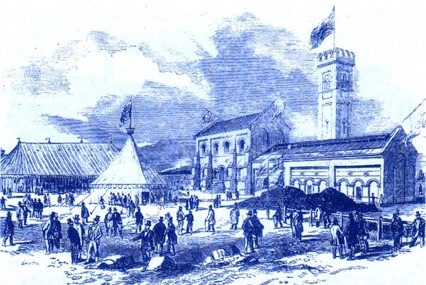In the bustling city of London, a steady supply of clean and safe drinking water is crucial to sustain the needs of its millions of residents. Over the centuries, London has evolved its water storage systems from simple wells to complex reservoirs, ensuring a resilient and reliable water supply. In this article, we will delve into the fascinating history and development of London’s water storage systems, highlighting their significance and the challenges they have overcome. Join us on this journey as we explore the evolution of water storage in the great city of London.
The Early Days: Wells and Springs
Centuries ago, before the advent of modern water storage systems, London relied heavily on wells and natural springs to meet its water needs. These wells were typically dug deep into the ground, reaching the water table, and were often located in communal areas for easy access by the local population. However, as the city grew in size and population, the reliance on wells became increasingly inadequate to meet the rising demand for water.
The Birth of Aqueducts
To address the growing water scarcity issue, London turned to the construction of aqueducts. Aqueducts were engineered structures designed to transport water over long distances from reliable water sources to the city. The Romans were pioneers in this field, and their expertise in aqueduct construction was utilized to bring fresh water to London.
One of the most notable aqueducts in London’s history is the New River. Constructed in the early 17th century, the New River was an engineering marvel that brought water from springs near Hertfordshire, over 40 miles away, to the heart of the city. This ambitious project revolutionized London’s water supply and provided a more reliable source of water for its growing population.
The Rise of Reservoirs
As London continued to expand, the reliance on aqueducts alone proved insufficient to meet the city’s ever-increasing water demands. The need for additional storage capacity became evident, leading to the construction of reservoirs. These reservoirs acted as large-scale storage facilities, allowing water to be stored during times of abundance and released during periods of high demand or drought.
One of the most significant reservoirs in London is the Queen Elizabeth II Reservoir. Located in the west of the city, this vast reservoir has a storage capacity of over 125 million gallons of water. It plays a crucial role in maintaining a stable water supply for London, particularly during dry spells or emergencies.
The Modern Era: Advanced Water Treatment
In recent decades, London’s water storage systems have undergone further advancements to ensure the delivery of clean and safe drinking water to its residents. Advanced water treatment processes, including filtration, disinfection, and the removal of contaminants, have become the norm. These processes not only safeguard public health but also contribute to the overall resilience of the city’s water storage systems.
Challenges and Future Outlook
While London’s water storage systems have proven their resilience over the years, they have not been without challenges. Population growth, climate change, and aging infrastructure pose ongoing threats to the city’s water supply. However, London has consistently demonstrated its ability to adapt and overcome these challenges, ensuring the continued availability of water for its residents.
Looking to the future, London has ambitious plans to further enhance its water storage systems. Investments in infrastructure, water efficiency measures, and innovative technologies are being made to improve the city’s resilience in the face of a changing climate and growing population. These efforts will help secure London’s water supply for generations to come.
Conclusion
London’s water storage systems have come a long way since the days of simple wells and springs. From ancient aqueducts to modern reservoirs, the city has continuously evolved its water infrastructure to meet the needs of its ever-growing population. Today, London stands as a testament to the resilience and adaptability of water storage systems, ensuring a reliable supply of clean and safe drinking water for its residents. As the city continues to face new challenges, it will undoubtedly rise to the occasion, securing a sustainable water future for generations to come.
